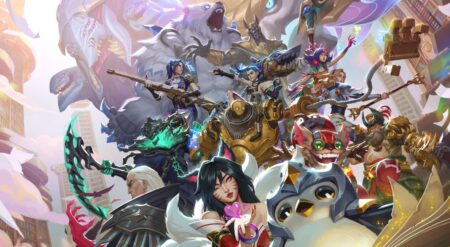Square Enix has made their new HD-2D releases a major highlight of any release calendar, and Dragon Quest 1 and 2 HD-2D Remake is certainly on that highlight list. They regularly mean that a classic RPG will be remade to feel like a modern game for modern consoles, removing numerous barriers for those who want to replay those classics, like Dragon Quest III HD-2D Remake. Or, a new RPG will be released under that brand that pushes the envelope of classic RPG experiences while feeling like a bygone era, like Octopath Traveler.
As announced with Dragon Quest III, Dragon Quest and Dragon Quest 2 will be getting the HD-2D treatment as part of the release of the Erdrick Trilogy. We got to go hands-on with Dragon Quest 1 and 2 HD-2D Remake during PAX East, and it feels like more than just an HD-2D update.
Dragon Quest 1 and 2 HD-2D Remake are sequels to Dragon Quest 3. Each delves further into the legend of Erdrick. That’s why 3 came out first before 1 and 2, according to the announcement stream. During the hands-on experience, we could only play a very short snippet of Dragon Quest and Dragon Quest 2, as they are both in the same package. Not much was shown, but a lot was revealed.
Dragon Quest 1 and 2 HD-2D Remake adds new quality-of-life updates.

Firstly, the HD-2D treatment in Dragon Quest 1 and 2 HD-2D Remake looks stellar. It always has, but it’s looking better than ever. The HD-2D implementation has drastically improved in lighting, landscape design, ability effects, and more. This could be the fact that the demo was run on a PS5, when I played Dragon Quest 3 HD-2D Remake on an OLED Switch.
That jump in console power alone could be enough for a big enough difference in quality. Or, because they already have the models for Dragon Quest games made, the developers had the opportunity to refine those resources, making them look overall better in quality and usage. That’s on top of making the games fully voiced, too.
But Dragon Quest 1 and 2 HD-2D Remake isn’t just an HD-2D upgrade to a 39- and 38-year-old game. Several quality-of-life features were added that weren’t in past Square Enix HD-2D releases. For example, during combat, abilities are highlighted based on whether an enemy is vulnerable to that attack.
Dragon Quest 1 and 2 HD-2D Remake adapts to how we play games now.
This is a fantastic update for fans old and new who may not always remember which ability has an affinity to a certain element, and that certain enemies, as they change over the course of the game, also change their weaknesses. Generally, during late-game Dragon Quest moments, when many enemies are participating in a battle, picking them off individually through elemental affinity is a must to survive.
Another significant change to the Dragon Quest 1 and 2 HD-2D Remake applies directly to Dragon Quest. The original release back in 1986 (yes, it’s been that long) had simple one-on-one fights. It was just your hero against one enemy. While the former stays true, there are still no party members in this shorter experience. The latter has been updated to be like the current Dragon Quests, with multiple enemies on screen at once to take you down.
One update significantly changes how combat works and will force you to think differently about each turn. Deciding how to attack to take out as many enemies as possible, healing up if you know big attacks from several monsters are coming, so as not to die. This also means that leveling and getting more powerful will be much less grindy. Think about it. That one-monster-at-a-time experience gain has now grown exponentially.
This gameplay experience is fit for new players, and veterans alike.
This may change the original pace of the game, but that is for the better. Asking a new player to play two games together to get the full story is a lot to ask. But shortening two shorter RPGs by reducing the grind is a massive way to make the game not only palatable but more welcoming to newer audiences that have an affinity to less grindy RPG experiences.
To be clear, the two games are still going to play out separately. Each is selectable from the start screen, similar to any game collection. This lets you play the first two games in any order you’d like. You can play them in order or take a break from one while playing the other. There is no flow or automatic start from 1 into 2.
More changes to the originals were promised, but we weren’t able to see those updates. Regardless, even the ones seen so far are significant enough to not only modernize the first two Dragon Quest games via the HD-2D treatment, but also evolve the HD-2D formula for the better.
The updates don’t just make the game look better; they also add subtle changes, like telling you if an enemy is weak or resistant to an ability’s particular element.Dragon Quest I+II HD-2D Remake gives new life to one of Enix’s oldest series, and as a new fan, I can’t wait to play more of this collection and see how these games have evolved.
Dragon Quest I+II HD-2D Remake will release in 2025 on PC, Xbox Series X|S, PlayStation 5, and Nintendo Switch.







